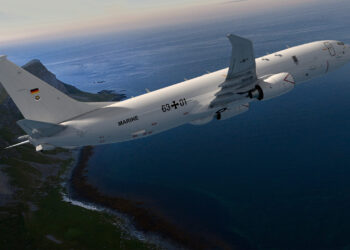UK Ministry of Defence,
The Ministry of Defence has placed £235m of contracts with industry to provide power and propulsion equipment for the new Royal Navy aircraft carriers it was confirmed today, Monday 6 October 2008.
At 65,000 tonnes each, HMS Queen Elizabeth and HMS Prince of Wales will be among the world's largest warships. The latest contracts will deliver the carriers' gas turbines, generators, motors, power distribution equipment, platform management systems, propellers, shafts, steering gear, rudders and stabilisers.
Simultaneously, the key industrial suppliers involved have co-operated to form an alliance that will ensure the equipment is integrated into the ships in the most cost-effective manner.
Each carrier's propellers will be driven by two powerful electric motors, making them the largest warships in the world to use electric rather than mechanical drive technology. The electric motors will be powered by diesel- and gas-turbine-driven generators which can be located elsewhere within the ship, freeing up valuable space in the hull and providing greater resilience to battle damage.
The electric propulsion technology will be provided by Scots-based companies Rolls Royce in Fife and Converteam in Glasgow.
Rolls Royce's Dalgety Bay facilty will benefit from a £13m contract to provide rudders and stabilisers which steer the ship and keep it level. Overall, Rolls Royce's share of the latest carrier contracts is £96m.
Power conversion specialists Converteam will be providing the electric equipment which controls and monitors the power for the propulsion system and motors, under a contract worth £26m. This involves making medium-voltage switchboards, electric converters, and filters.
Two state-of-the-art gas turbines for each ship will be built in Bristol – producing 70 mega watts (MW) of power – and will be coupled to generators to be built in Rugby. Combined with the diesel engines already on order, they will supply the enormous amounts of electricity each carrier needs to move through the water fast enough to launch and recover aircraft, and to power onboard systems such as lighting and heating. In all each ship will be capable of generating some 109 MW, enough power to supply a town the size of Swindon.
MOD Defence Equipment and Support Director General Ships, Rear Admiral Bob Love, said:
“The new carriers represent a series of firsts for the Fleet and this latest propulsion technology has not yet been seen in the Royal Navy on this scale.
“This is a step change in the way our ships are powered and, as well as boosting capacity, will significantly improve fuel efficiency enabling uninterrupted long distance deployments and reducing running costs.”









